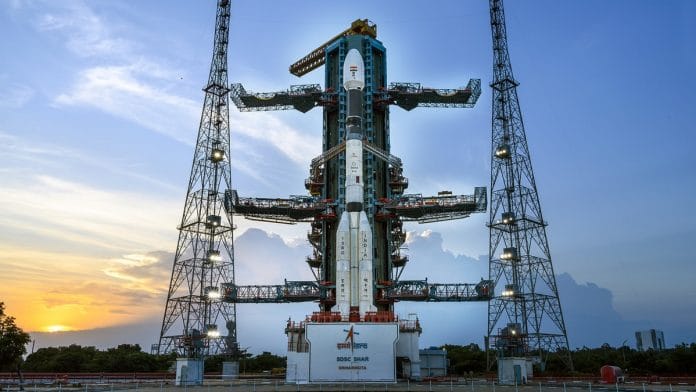Bengaluru: The launch of Indian Space Research Organisation (ISRO)’s much-anticipated geostationary earth observation satellite, EOS-03, resulted in an unsuccessful mission after the GSLV’s cryogenic upper stage failed to ignite in space and carry the payload to its designated orbit.
This was the eighth flight of the upper stage, and the 14th flight of the GSLV rocket.
The cryogenic engine has been developed within the country in an effort to replace the upper stage — part of a rocket procured from Russia — used for the GSLV. The Cryogenic Upper Stage Project formally commenced in ISRO in 1994, with the first flight attempt in April 2010.
India’s space agency said in a tweet earlier Thursday that the performances of the first and second stages of the rocket were normal, but the upper stage failed to ignite due to a “technical anomaly”.
GSLV-F10 launch took place today at 0543 Hrs IST as scheduled. Performance of first and second stages was normal. However, Cryogenic Upper Stage ignition did not happen due to technical anomaly. The mission couldn't be accomplished as intended.
— ISRO (@isro) August 12, 2021
The EOS-03 satellite was to be India’s most sophisticated earth-imaging satellite in the higher geostationary orbit, appearing stationary at the same point in the sky from earth.
With its high resolution and ability to image a larger geographical area in more frequent intervals, the satellite was expected to provide real-time assistance during disaster management, security threats, and extreme weather events, as well as aid in monitoring agriculture, forestry, mineralogy, water levels, and snow caps.
Also read: How this IIT-Madras grad is pushing battery tech in US that could power passenger planes
The cryogenic engine mechanism
Cryogenic engines are typically very powerful and carry liquid propellant at extremely low temperatures. They are complex but highly efficient and provide better thrust for each kilogram of fuel burnt when compared to the traditional solid and liquid propellant rocket stages.
Cryogenic engines were a crucial part of National Aeronautics and Space Administration (NASA)’s Apollo missions to the moon, and were also used by the GSLV for the Chandrayaan-2 mission. Only six countries have developed their own cryogenic engines: the US, France/European Space Agency, Russia, China, Japan, and India.
Cryogenic engine typically makes use of liquid oxygen (LOX), which liquifies at -183 deg C, and liquid hydrogen (LH2), which liquefies at -253 deg C. LH2 acts as the fuel while LOX acts as the oxidiser that explosively reacts with the hydrogen, producing thrust. When the engine ignites, the two liquids are pushed into a combustion chamber by booster pump continuously.
ISRO’s cryo stage, called the C25, came after the successful flights of the earlier versions developed for previous GSLV launchers. It was designed by the Liquid Propulsion Systems Center, in collaboration with Vikram Sarabhai Space Centre, ISRO Propulsion Complex and Satish Dhawan Space Centre.
C25’s tanks carry over 27,000 kg of fuel and fire for approximately 720 seconds. During this time, the engine develops a thrust of 73.55kN in vacuum.
Also read: Earth’s inner core is growing more on one side than the other – but the planet isn’t tipping






